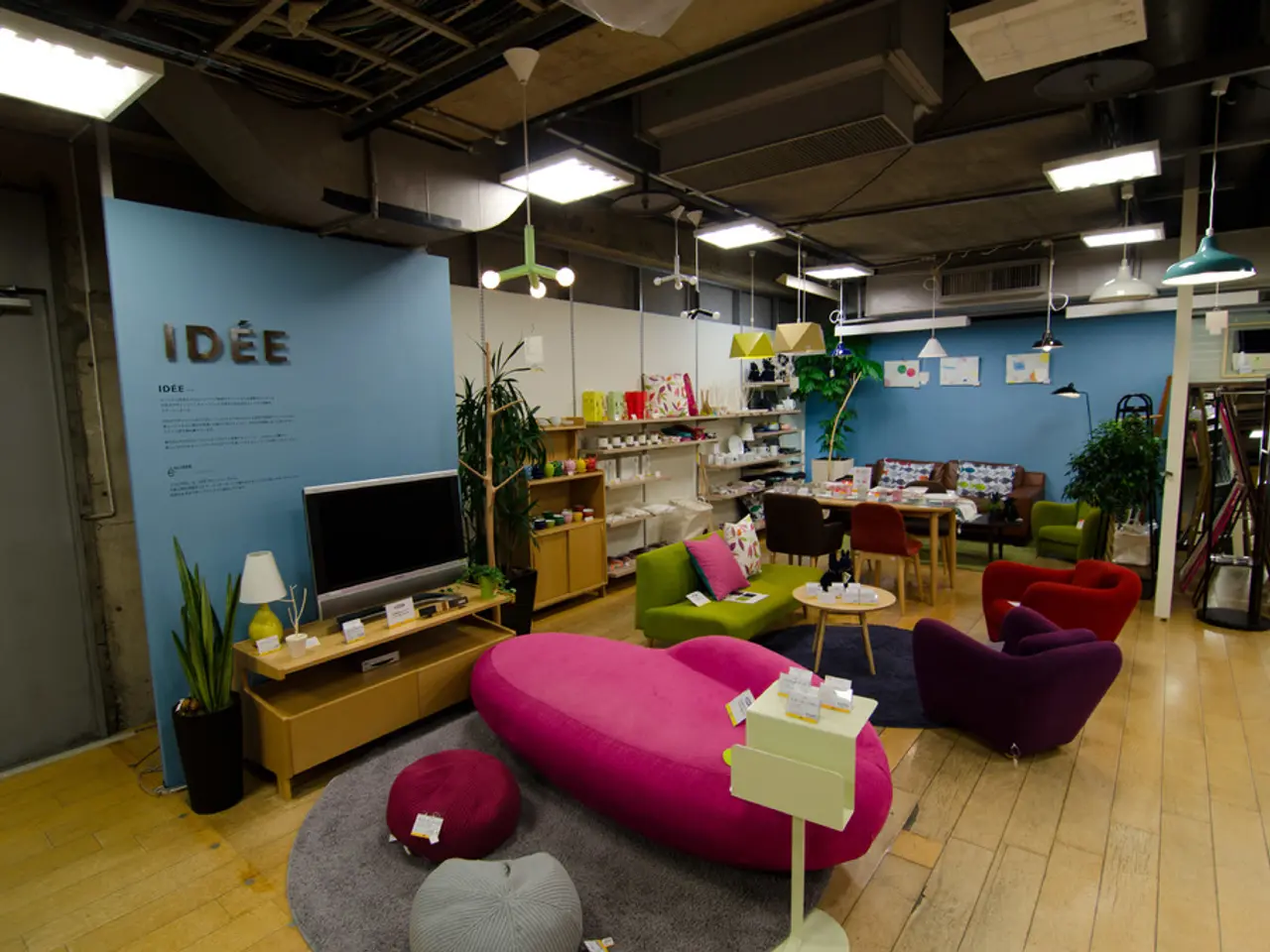Enhanced Home Automation Solutions: Sculpting Modern Lifestyles
==============================================================================
Home automation is revolutionizing modern living, offering a myriad of benefits that range from increased convenience to improved energy efficiency and cost savings. By integrating smart devices through a central hub or app, home automation systems allow devices to communicate and perform tasks automatically based on triggers, schedules, or sensor inputs.
One of the key advantages of home automation is its ability to lead to energy efficiency and cost savings. For example, home assistant automations can operate devices like thermostats, lights, and appliances more efficiently, turning off lights when no one is in a room, and adjusting heating and cooling based on occupancy and time.
Automations can be as simple as a "Good Morning" automation that turns on lights, starts the coffee maker, and adjusts the thermostat, or as complex as a "Movie Night" automation that dims lights, turns on the TV, and starts a streaming service with a single voice command or automation preset. An "Away Mode" automation can lock doors, turn off lights, adjust the thermostat, and arm the security system when the user leaves home, while a "Bedtime" automation can dim lights, adjust the thermostat to a comfortable sleeping temperature, and play soft music or sounds as part of a bedtime routine.
Home automation also enhances security and safety by enabling remote monitoring, locking doors, turning on lights, and simulating presence to deter burglars. Automated security systems can include motion detectors, smart cameras, and alarms, which can notify homeowners of unusual activity.
Setting up home assistant automations is generally simple, especially with user-friendly apps and guides provided by modern platforms like Amazon Alexa, Google Assistant, and Apple HomeKit. As technology evolves, home automation systems will continue to get smarter, offering more ways to customize and streamline living spaces.
However, to achieve the maximum energy efficiency and cost savings, it is essential to follow best practices when setting up home assistant automations. Here are eight practical tips to help you make the most of your home automation system:
- Automate Heating and Cooling Based on Occupancy and Time: Configure your heating system to turn off radiators, underfloor heating, or electric panel heaters when rooms are unoccupied. Program varying temperature profiles by time of day—for instance, warmer temperatures in early morning and late evening, cooler during daytime when away or asleep. Use presence sensors to adjust HVAC settings automatically to reduce wasted energy.
- Control Lighting and Appliances Smartly: Use smart plugs or sockets to switch appliances completely off rather than leaving them on standby. Automate turning off all lights, heating, and appliances in empty rooms or when the whole house is unoccupied. Schedule appliances to run during off-peak or cheaper electricity periods if your tariff supports it (e.g., Economy 7).
- Leverage Smart Blinds and Windows: Automate blinds or curtains to close at sunset during winter and open during the day to utilize natural heat and lighting effectively. In summer, use shading to reduce cooling demand. This can reduce energy usage for heating and cooling by up to 8% or more.
- Utilize Energy Management Systems and Real-Time Monitoring: Integrate energy monitoring within Home Assistant (via compatible smart meters or sensors) to track real-time consumption. Use this data to trigger automations that avoid unnecessary power use, such as switching off devices or adjusting temperatures. Systems like Domoticz and OpenHAB complement Home Assistant with detailed energy analytics that can help save up to 30% on utility bills.
- Create “All Off” Scenes for Leaving Home or Nighttime: Design automation scenes that, when you arm your security alarm or press a “leave home” button, turn off heating, lighting, and all appliances to prevent wasteful standby power usage.
- Adjust Water Heating Scheduling: Control your hot water heater to only heat water during times when it will be used, avoiding unnecessary heating periods.
- Plan for Scalability and Integration: Choose a Home Assistant setup with broad device compatibility and community support to easily integrate new devices like smart thermostats, sensors, and appliances, making your automation setup more flexible and powerful as you expand.
- Use Thermostat Eco Modes and Learning Features: Utilize your smart thermostat’s eco mode and learning capabilities to automatically adjust heating or cooling temperatures when the home is empty or occupants are asleep, optimizing comfort and cost savings without manual control.
By implementing these practices, you can reduce unnecessary energy use, adapt consumption to actual occupancy and time-based needs, and shift power use to cheaper periods, all contributing to lower energy bills and a smaller carbon footprint through Home Assistant automations. These guidelines are supported by multiple expert sources and practical user experiences in 2025.
- Investing in smart-home devices like energy-efficient lighting, smart thermostats, and automated blinds from the home-and-garden and home-improvement sectors can significantly improve lifestyle and energy savings through smarter technology.
- By automating heating and cooling systems, lighting, and appliances based on occupancy, time, and sensor inputs, a home automation system can lead to a more energy-efficient and cost-effective lifestyle.
- To make the most of home automation, consider integrating gadgets like smart plugs, energy management systems, and real-time monitoring devices to optimize energy consumption and ultimately save on home-improvement expenses.




